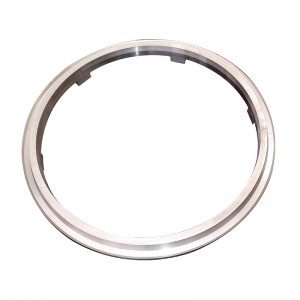- Afrikaans
- Albanian
- Amharic
- Arabic
- Armenian
- Azerbaijani
- Basque
- Belarusian
- Bengali
- Bosnian
- Bulgarian
- Catalan
- Cebuano
- China
- China (Taiwan)
- Corsican
- Croatian
- Czech
- Danish
- Dutch
- English
- Esperanto
- Estonian
- Finnish
- French
- Frisian
- Galician
- Georgian
- German
- Greek
- Gujarati
- Haitian Creole
- hausa
- hawaiian
- Hebrew
- Hindi
- Miao
- Hungarian
- Icelandic
- igbo
- Indonesian
- irish
- Italian
- Japanese
- Javanese
- Kannada
- kazakh
- Khmer
- Rwandese
- Korean
- Kurdish
- Kyrgyz
- Lao
- Latin
- Latvian
- Lithuanian
- Luxembourgish
- Macedonian
- Malgashi
- Malay
- Malayalam
- Maltese
- Maori
- Marathi
- Mongolian
- Myanmar
- Nepali
- Norwegian
- Norwegian
- Occitan
- Pashto
- Persian
- Polish
- Portuguese
- Punjabi
- Romanian
- Russian
- Samoan
- Scottish Gaelic
- Serbian
- Sesotho
- Shona
- Sindhi
- Sinhala
- Slovak
- Slovenian
- Somali
- Spanish
- Sundanese
- Swahili
- Swedish
- Tagalog
- Tajik
- Tamil
- Tatar
- Telugu
- Thai
- Turkish
- Turkmen
- Ukrainian
- Urdu
- Uighur
- Uzbek
- Vietnamese
- Welsh
- Bantu
- Yiddish
- Yoruba
- Zulu
Nov . 08, 2024 03:31 Back to list
Large Pallet Mould Design for Efficient Production and Durability
Understanding Big Pallet Moulds An Essential Component in Modern Manufacturing
In the realm of manufacturing, particularly in the plastics industry, the importance of moulds cannot be understated. Among these, big pallet moulds have carved out a significant niche, facilitating the production of large plastic pallets that are crucial for logistics, transportation, and storage. This article delves into the concept of big pallet moulds, their types, manufacturing processes, and their impact on modern supply chains.
What Are Big Pallet Moulds?
Big pallet moulds are specialized tools used in the production of large plastic pallets—sturdy structures that are essential in various industries for moving goods. These pallets are designed to withstand heavy loads, making them ideal for storage and transportation in warehouses and shipping environments. The moulds are typically made from high-strength materials to endure the rigors of production while ensuring the final product maintains high durability and reliability.
Types of Big Pallet Moulds
There are several types of big pallet moulds, each tailored to produce specific pallet designs. Common types include
1. Injection Moulds These are perhaps the most widely used in manufacturing plastic pallets. In this process, molten plastic is injected into a cavity formed by the mould to create the desired shape. Injection moulding is favored for its ability to create intricate designs and its efficiency in producing large quantities.
2. Blow Moulds This method involves inflating a heated plastic tube inside a mould, creating hollow structures. It is particularly useful for producing pallets that require lightweight characteristics while maintaining strength.
3. Rotational Moulds Rotomoulding is another technique where plastic materials are heated and rotated within a mould, allowing the material to coat the interior uniformly. This method is excellent for producing large, hollow pallets with consistent wall thickness.
big pallet mould

Manufacturing Process
The manufacturing process of big pallet moulds involves an intricate series of steps designed to ensure precision and quality. Initially, the design phase requires highly skilled engineers who utilize computer-aided design (CAD) software to create detailed models. Once the design is approved, the production of the mould itself begins, typically involving machining processes to carve the mould from durable metals like steel or aluminum.
After the mould is created, extensive testing is conducted to guarantee that it meets all functional and durability requirements. Quality control is crucial, as any defect in the mould can lead to significant production costs and delays. Once validated, the moulds can be used in industrial-scale production environments.
Impact on Supply Chains
The role of big pallet moulds in supply chains is pivotal. As businesses strive for efficiency and cost-effectiveness, the lightweight yet strong nature of plastic pallets becomes increasingly attractive. Their resistance to moisture, chemicals, and pests makes them superior to wooden pallets—reducing maintenance costs and enhancing hygiene in various industries, particularly food and pharmaceuticals.
Furthermore, big pallet moulds enable companies to rapidly scale production, meeting the demands of a dynamic market. The ability to produce customized pallets tailored to specific logistic needs offers a competitive edge to manufacturers, allowing for flexibility in their operations.
Conclusion
In conclusion, big pallet moulds are an integral part of modern manufacturing, simplifying the production of durable plastic pallets that are essential for various industries. As technology advances, the designs and capabilities of these moulds continue to evolve, paving the way for innovations that could further enhance the efficiency and sustainability of supply chain operations. For manufacturers looking to optimize their processes, investing in high-quality big pallet moulds is not just beneficial; it's a strategic necessity.
-
8mm Thin-Walled Cast Steel Manhole Cover Pallet Bottom Ring | Durable
NewsAug.04,2025
-
Premium Cast Iron Water Main Pipe: Durable, Corrosion-Resistant
NewsAug.03,2025
-
Durable Cast Iron Water Mains | AI-Optimized Systems
NewsAug.02,2025
-
High-Efficiency Propane Boiler for Baseboard Heat | Save Energy
NewsAug.01,2025
-
Premium Source Suppliers for Various Gray Iron Castings
NewsJul.31,2025
-
Durable Cast Iron Water Main Pipes | Long-Lasting
NewsJul.31,2025


